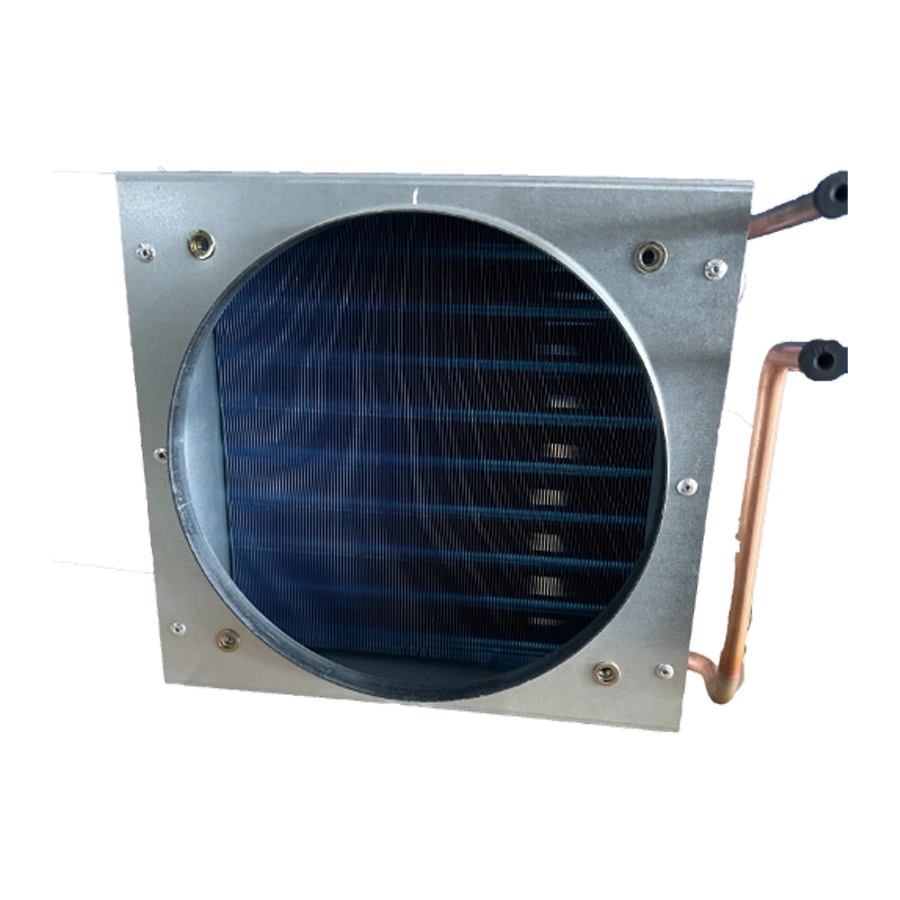Material selection and manufacturing process of copper tube aluminum fin condenser
3 min readIn modern industrial refrigeration systems, copper tube aluminum fin condensers are widely used due to their efficient heat exchange performance and relatively economical manufacturing costs. This type of condenser is usually used in air conditioning, cold storage, industrial cooling, and other fields. Its design and manufacturing involve many disciplines such as materials science, fluid mechanics, heat conduction theory, and precision machining technology. This article will take an in-depth look at the material selection requirements for copper tube aluminum fin condensers, key steps in the manufacturing process, and how they interact with each other to achieve optimal performance.

First, let's discuss the core components of the copper tube and aluminum fin condenser-copper tube and aluminum fin. The reason why copper tubes are widely used is because copper has excellent thermal conductivity. Its thermal conductivity is second only to silver, ranking second among all metals. In addition, copper has good flexibility and plasticity and can be easily bent into complex shapes to meet different condenser design concepts. Copper also has good corrosion resistance, allowing it to work stably in a variety of environments for a long time.
Aluminum fins were chosen due to their lightweight, high thermal conductivity, and relatively low cost. The density of aluminum is about one-third that of copper, which reduces the weight of the entire condenser. At the same time, the thermal conductivity of aluminum is also very high, which can meet the needs of heat exchange. Aluminum fins are generally extruded and can be designed into a variety of shapes to enhance airflow disturbance and heat transfer efficiency.
Next, we will analyze the manufacturing process of copper tube aluminum fin condenser in detail. The process begins with material pre-treatment, including cleaning and annealing of copper tubes, and cutting and cleaning of aluminum fins. The purpose of pretreatment is to ensure the cleanliness of the material surface and improve its processing performance.
Then, enter the key pipe-making process. Here, the copper pipes undergo strict size control and shape shaping. In order to improve heat exchange efficiency, copper tubes are often designed with an internal thread structure, which can increase the turbulence of the internal refrigerant, thus improving the heat exchange capacity. In addition, the thickness of the tube wall needs to be precisely controlled to ensure sufficient pressure-bearing capacity and optimal heat transfer.
Next is the process of combining the fins with the copper tube. The aluminum fins are usually fixed on the copper tube by expanding the tube or welding. Tube expansion technology uses mechanical means to plastically deform the copper tube so that it is in close contact with the aluminum fins; while welding connects the two by melting the metal. This step requires extremely high equipment accuracy because it is directly related to the sealing and pressure resistance of the condenser.
Finally, the completed copper tube aluminum fin assembly will undergo surface treatment, such as spraying or plating, to improve corrosion resistance and extend service life. At the same time, overall assembly and testing will be carried out as needed to ensure that the performance of each condenser meets the design standards.
Throughout the entire manufacturing process, quality control is an important link that cannot be ignored. From the selection of raw materials to the delivery of final products, each step requires strict inspection, including but not limited to dimensional accuracy inspection, pressure testing, and heat exchange efficiency testing. These tests not only ensure product quality but also provide data support for continuous improvement of production processes.
In summary, the material selection and manufacturing process of the copper tube aluminum fin condenser have an important impact on the performance and life of the condenser. When selecting materials, factors such as thermal conductivity, corrosion resistance, and economy need to be considered. In the manufacturing of copper tube aluminum fin condensers, it is necessary to pay attention to the control of welding temperature, tube expansion strength, and crimping strength, as well as the cleaning and anti-corrosion treatment of materials. Through reasonable material selection and manufacturing process, the heat exchange efficiency, corrosion resistance, and lifespan of the condenser can be improved to meet the needs of different fields.
mia
Lon@ningbo-senjun.com
